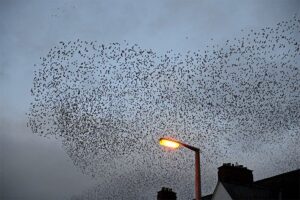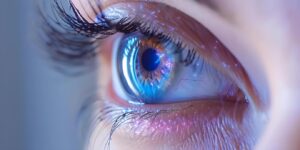Light Pollution: A Wildlife and Human Health Disruptor

– Shivaan Darda

Air, water, land and sound are a few types of pollution that we are working to curtail. However, light disrupting human and animal life is a fairly unfamiliar concept. While it does make you miss out on stargazing in the city, it is far more crucial for the environment. As cities get brighter, nature and our bodies pay the price. Here’s how:
Losing the Natural Rhythm:- Many animals rely on darkness for survival. Artificial lights disrupt their natural cycles, affecting migration, reproduction and hunting patterns. Studies show that sea turtle hatchlings, which instinctively crawl toward the ocean using natural light cues, are now disoriented by city lights, leading to mass fatalities.
Birds Are Flying Off Course—Literally: Every year, millions of migratory birds die due to light pollution, as they become disoriented and collide with buildings. This is because they rely on the night sky for navigation. Bright city lights throw them off track, leading to exhaustion and death.
Insects Are Vanishing at an Alarming Rate: Artificial lights are one of the key factors in a whopping 75 percent decline in insect populations over the past 50 years. The bad news is that our ecosystems rely on them.

Messed-Up Sleep Cycles in Humans: Exposure to artificial light at night, especially blue light from screens and streetlights, suppresses melatonin production, making it harder to fall asleep. This gives way to health risks such as obesity, heart disease, and depression. A WHO study suggests that shift workers, who experience chronic exposure to artificial light, are classified as having a probable carcinogen risk due to circadian rhythm disruption.
Simple fixes like shielded streetlights, motion sensors and switching to warmer-colored LEDs can help bring back the night sky while keeping ecosystems and humans in balance.